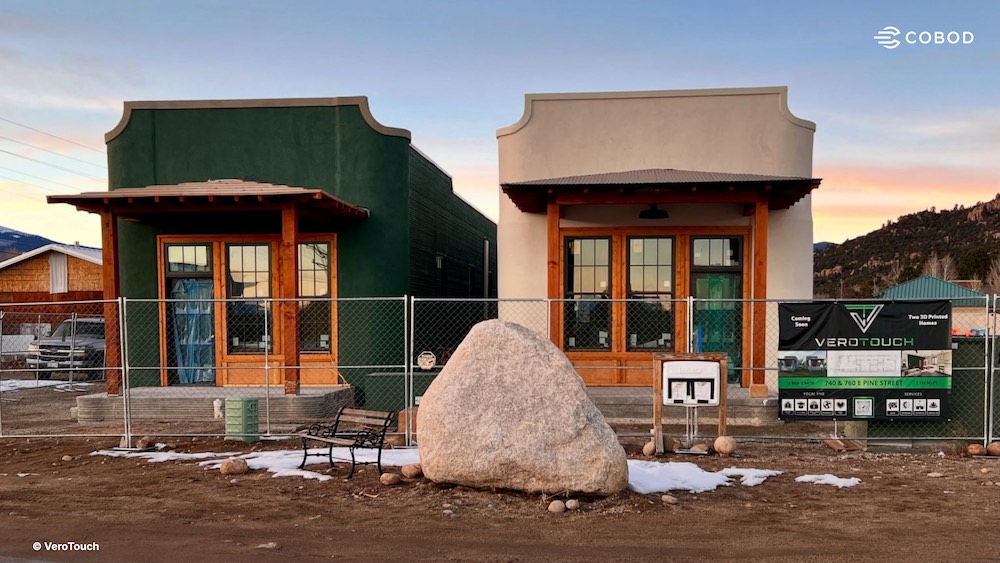In the mountain town of Buena Vista, Colorado, a new chapter in home construction is being written with the unveiling of VeroVistas, two 3D-printed homes designed to withstand the growing threat of wildfires. This innovative project is a collaboration between construction technology firm VeroTouch and local contractor South Main.
The 1,100-square-foot homes were built using a COBOD BOD 2 3D printer and a specially formulated, A1-rated fire-resistant concrete. This material is non-combustible, offering a significant safety advantage over traditional wood-frame houses, a crucial feature in a state where nearly half the population resides in wildfire-prone areas.
Priced at approximately $625,000, the VeroVistas homes are comparable in cost to an average single-family house in Colorado. The two model homes showcase different aesthetic possibilities: one retains the characteristic layered look of 3D printing, while the other is finished with a conventional stucco exterior. The construction process itself is a testament to the efficiency of the technology, with the superstructure of one home printed in a remarkable 16 days, significantly reducing construction time and labor requirements.
Grant Hamel, CEO of VeroTouch, emphasized the durability and long-term vision behind the project. “In an era of fast housing, VeroTouch is creating legacy homes that can be passed down, rather than torn down,” he stated, expressing confidence that the homes will stand for a century or more.
Following the successful completion of the Buena Vista project, VeroTouch is set to embark on a larger development in Salida, Colorado. This upcoming 32-home community has received support from Colorado’s Innovative Housing Incentive Program (IHIP), signaling a growing recognition of 3D printing’s potential to address the state’s housing needs.
Governor Jared Polis commended the initiative, highlighting it as an example of the state’s commitment to supporting new and innovative construction methods. The VeroVistas project is a promising step forward in creating more resilient and sustainable housing solutions in the face of climate change and the increasing frequency of natural disasters.


